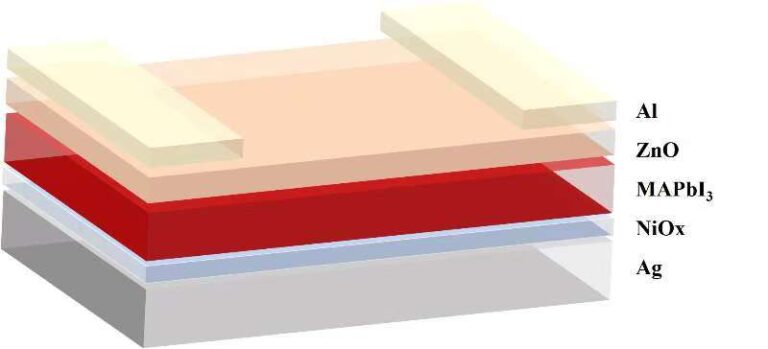
Scientists at the University of Chinese Academy of Sciences have designed an ultrathin perovskite solar cell that utilizes a Gires-Tournois resonator to improve light absorption.
Gires-Tournois resonators are optical standing-wave resonators designed for generating chromatic dispersion. They are usually based on a reflective metal mirror and are primarily used in chirping applications such as pulse compression. “Our Gires Tournois resonator structure uses a simple optical structure, combined with a silver back mirror,” the research's lead author, Ning Dai, told pv magazine. “It optimizes light capture and utilization while improving light absorption capacity.”
The researchers said they sought to “meticulously” design the thickness of each layer in the solar cell and chose silver for the reflective metal mirror after a series of simulations.
They designed the cell with a 10 nm electron transport layer (ETL) based on zinc oxide (ZnO), a 45 nm perovskite absorber, a 5 nm hole transport layer (HTL) made of nickel(II) oxide (NiOx), and a 60 nm silver back mirror. “The effectiveness of the proposed theoretical framework was verified through optical simulation and SCAPS software analysis, providing a foundation for experimental research on ultra-thin perovskite solar cells,” Dai said.
The proposed cell configuration, according to the research group, could achieve an average absorptivity of approximately 85%. This would be mainly due to an increase in light absorption in the wavelength range of 400-800 nm, which would result in a “significant” enhancement in the incident photon current efficiency (IPCE) attributable to “pronounced” light-matter interference effects between the perovskite absorber and the metal mirror.
“Electrical simulations indicate that the ultrathin MAPbI3 perovskite solar cell boasts a photoelectric conversion efficiency up to around 26%, higher than its conventional counterparts,” the academics explained. “Under ideal conditions, the conversion efficiency of ultra-thin perovskite solar cells can even reach about 27%.”
They added this kind of ultrathin perovskite cell requires the use of vacuum deposition techniques to achieve the desired efficiency levels in commercial production. “It is worth noting that the use of a very thin perovskite absorption layer reduces material costs and significantly reduces the lead content in the device,” they concluded.